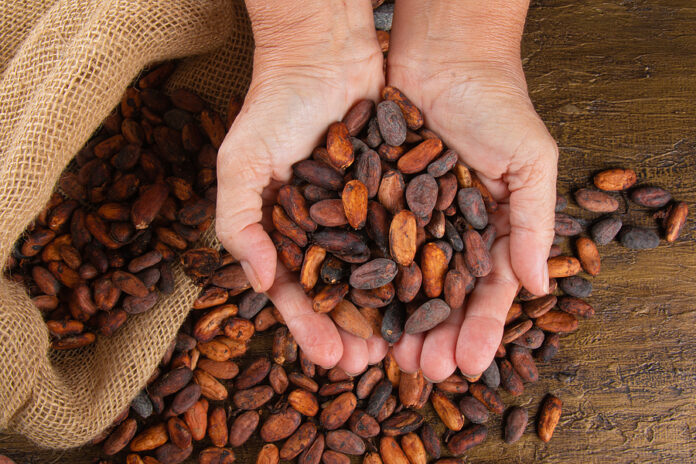
By Prashant Chauhan, Assistant Manager – Operations, The Smart Cube
Cocoa prices are hitting record highs, signaling a challenging time ahead for businesses that rely on this commodity. This surge is driven by a multitude of factors, from supply constraints to adverse weather conditions, which presents a complex landscape for industry players to navigate.
Cocoa market prices have been on an upward trend since August 2022, causing notable supply challenges for buyers. This year has been no different. Starting off in 2024, cocoa prices rose 3.7% and 33% M-o-M in January and February, respectively, driven by supply concerns in key cocoa-producing regions. End-use industries, primarily the chocolate industry, confectionery industry, baking and cosmetic industries, are facing losses as high prices impact profitability.
Despite cocoa prices in May 2024 correcting from all-time high levels in April, prices are expected to remain elevated for the remainder of the year due to a continuation in supply constraints and escalating freight costs. The fundamentals of the cocoa market still remain bullish as it is expected to witness a deficit for the third time in a row during marketing year 2024-25, beginning in October 2024.
Factors supporting prices include:
- Reduced bean arrival and limited sales: Supply disruptions have led to a decline in cocoa exports from major producing regions. For example, Nigeria – the fifth-largest cocoa producer – experienced a notable 32% Y-o-Y decline in cocoa exports in December 2023.
- Labor shortage: Continued labor shortages in the trade and logistics segment are anticipated to exert upward pressure on the global freight costs during H1 2024.
- Lower production: West African cocoa production, accounting for ~70% of global supply, is expected to fall short of expectations due to adverse weather conditions, with Ghana’s production forecast for the 2023/24 season being ~40% below its target of 820,000 MT.
- We are expecting a possible demand surge in H2 2024 from the hotel and restaurant industry during the peak tourist season, combined with a further supply constriction.
Challenges in cocoa supply
In MY2023–MY2024, global cocoa supply is anticipated to decline by ~11% Y-o-Y to 4.45 MMT. This is attributed to challenges such as climate change, increased input costs and the threat of pests and diseases across key cocoa producing nations.
Africa accounts for around 70% of the world’s cocoa output and continues to lead global cocoa production. Côte d’Ivoire, Ghana, Cameroon and Nigeria are the largest producers. This dominance in cocoa production exacerbates supply chain issues, as switching to alternative production locations is more challenging than other commodities. There are several other factors contributing to the increase in cocoa prices:
Environmental and agricultural factors
- Climate change: The combination of the lasting effects of El Niño and long-term climate change is resulting in a lasting impact on cocoa yields. El Niño caused reduced dew points and higher temperatures in West Africa, leading to drought stress, impacting pod development, and is projected to result in further supply challenges for global cocoa.
- Transition to alternative crops: Driven by profitability concerns, some cocoa farms have shifted to growing alternative crops. The recent surge in cocoa prices has led to cocoa expansion outside West Africa, with farmers in Brazil, Ecuador, and Colombia entering the market for profit. This impacts the current supply because cacao trees only reach maturity after 6 years, so production cannot quickly be replenished.
- Illegal mining: Mining is impacting cocoa production as farmers are leasing their lands to miners for significant payments. Around 2% of Ghana’s cocoa cultivation area has been lost to illegal mining activities.
Influence of market demands
- Lack of supply: There is an increasing demand for specialty chocolates. The global premium chocolate market is expected to grow at a compound annual growth rate (CAGR) of 8.8% from 2023 to 2032 to reach over $68 billion.
- Innovation and product development: Brands are launching new and innovative products, including cooking chocolate and products with increased shelf life further increasing demand on raw commodities.
Cost-related influences
- Fertilizer shortages and high input costs: The Russia-Ukraine war disrupted supply chains, driving up fertilizer prices, which impacted the cocoa industry, raising bean prices and affecting quality.
- Labor intensity and costs: Cocoa production is labor-intensive, and labor costs are rising. For instance, in Ghana, a key production country, minimum wages have increased from GHS 14.88 to GHS 18.15 per day in 2024.
- Deforestation pressure: Ghana and Côte d’Ivoire grapple with deforestation issues driven by the demand for alternative production sites, which can provide higher yields than cocoa plantations.
- Logistical hurdles and efficiency issues: In Côte d’Ivoire, inadequate road infrastructure leads to increased transport costs and delays at checkpoints.
Challenges in production methods
- Risk of pests and diseases: Cocoa faces significant challenges from various pests and diseases, leading to estimated losses of 30–40% of global production. Farmers in Ivory Coast, Ghana, and Nigeria have reported signs of black pod disease across plantations. This disease has devastated ~500,000 hectares of farmland in Ghana, resulting in a decline in cocoa output to 600,000 MT in MY2022–MY2023.
- Disrupted operations: Ghana’s cocoa processors have stopped operations intermittently in late H2 2023 and early H1 2024 due to a severe cocoa bean shortage and minimal inventory levels.
Best practices for mitigation
Businesses reliant on cocoa as a key commodity can do several things to mitigate against supply disruptions and price raises. Beyond planned price adjustments, as announced by leading chocolate manufacturers like Nestlé and Mondelēz, as well as operational efficiency measures, like streamlining operations and cutting head count, companies have a range of supply chain solutions they may choose to explore.
Supply chain diversification is an immediate option to ease pressures. To reduce dependency on West Africa, explore sourcing options from more than one destination, such as Brazil, Ecuador, and Indonesia. Businesses can also consider sourcing cocoa from multiple suppliers to reduce dependency on a single source.
Businesses can also explore the use of alternative ingredients where possible. The confectionery industry, for example, is shifting to cocoa butter equivalents derived from palm oil and exotic fats. Another option is to collaborate with suppliers to implement sustainable farming techniques that combat the adverse effects of climate change. Proposing a co-investment with suppliers into sustainable practices will benefit both parties by enhancing cocoa yields and mitigating the risk of crop failure in the long term.
Businesses can also mitigate concerns by partnering with freight forwarders, who can negotiate the best prices, ensure streamlined logistics, manage and track the shipment efficiently, and handle unforeseen obstacles in real time.
Furthermore, there are more procurement insights that will be crucial in controlling costs for businesses. Businesses should explore leveraging long-term contracts to enhance bargaining power and secure favorable terms. Diversifying your supplier base to reduce supply risks can also offer better negotiation power. Consider negotiating forward purchases to secure future supplies at a fixed price, mitigating price hikes.
Businesses can also enter medium-long-term contracts with suppliers and implement regular quarterly or half-yearly price reviews to manage risks associated with price volatility effectively. Additionally, while cost-plus and spot pricing models are typically followed in the cocoa bean industry, index-based pricing (cocoa futures market) can be an option as the index serves as a reference point for pricing adjustments, offering more stability and predictability.
Navigating uncertainties
As the cocoa market continues to fluctuate, agility and foresight will be critical for businesses to thrive amidst uncertainty. By staying attuned to market dynamics and implementing robust mitigation strategies, companies can weather the storm and emerge stronger on the other side.
 Prashant Chauhan is an experienced CPG and healthcare market intelligence professional, currently working as an Assistant Manager at The Smart Cube, with a professional focus on procurement services. He comes with ~7 years of professional experience in strategic research across multiple industries. Prashant has a strong educational background with a PGDBA in International Marketing from Symbiosis, Pune, and a diploma and degree in Pharmacy, from DIPSAR, University of Delhi.
Prashant Chauhan is an experienced CPG and healthcare market intelligence professional, currently working as an Assistant Manager at The Smart Cube, with a professional focus on procurement services. He comes with ~7 years of professional experience in strategic research across multiple industries. Prashant has a strong educational background with a PGDBA in International Marketing from Symbiosis, Pune, and a diploma and degree in Pharmacy, from DIPSAR, University of Delhi.

Credit: Source link






![[Guide] 5 Reasons Your Business Does or Doesn’t need an ESOP [Guide] 5 Reasons Your Business Does or Doesn’t need an ESOP](https://foodindustryexecutive.com/wp-content/uploads/2024/08/Food-Industry-Executive-696x457.png)








